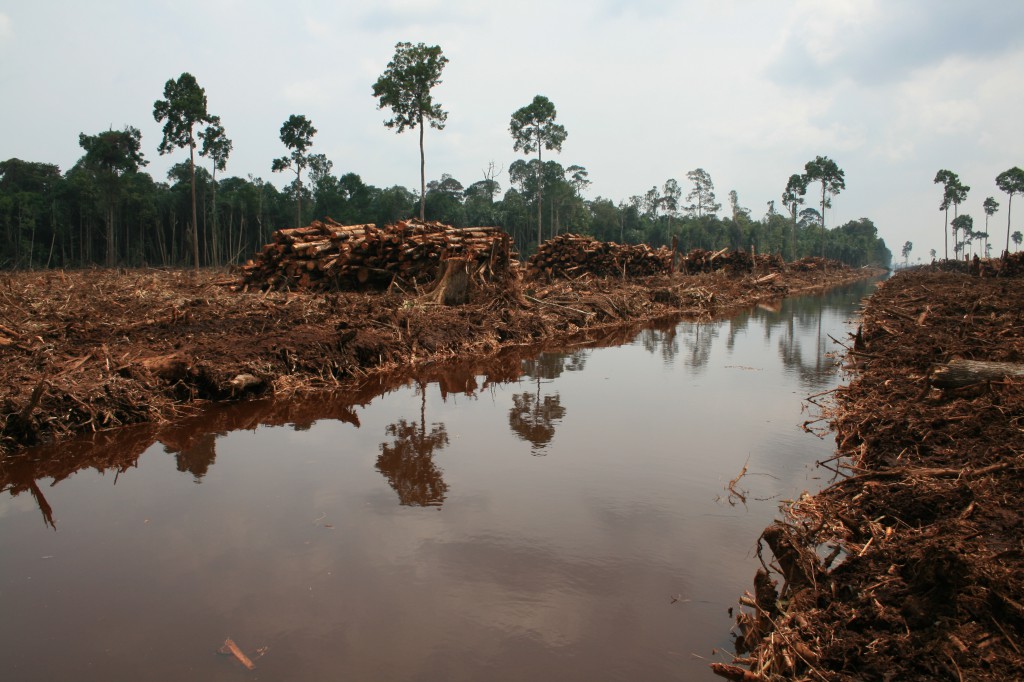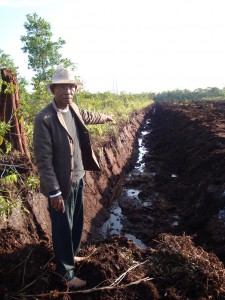Last month, I took a trip to Indonesia, in part, to learn the story of peat. While peat is not a part of the average American’s vocabulary, it is a word that is getting more and more attention within crowds who care about climate change. So you are probably asking, what the heck is peat and why should I care?
Peat is an accumulation of partially decayed plant matter that forms in wetland bogs, moors, and peat swamp forests, amongst other places. Dead vegetation got you interested yet? Well, stick with me – there’s more to it. Peat is getting a lot of play these days because it is a big reason why Indonesia was named the world’s third biggest greenhouse emitter, after China and the United States, in 2006.
In Indonesia, carbon-rich peatlands are being cleared to make way for pulp-and-paper and palm oil plantations. In order to create pulpwood plantations and other developments on peatlands, these water-saturated ecosystems must first be drained. This causes the newly-dried peat to decompose, releasing massive greenhouse gas emissions. The peat is then susceptible to burning, which contributes additional carbon to the atmosphere.

While in Indonesia I met with people from a number of peatland communities. From person after person, community after community, I heard that Indonesian pulp paper companies are coming onto communities’ lands without their consent to log existing forest and develop new acacia plantations to feed their pulp mills. Some of these communities and the NGOs that work with them recently called for international buyers and investors in the Indonesia pulp and paper sector to require fundamental reforms before conducting further business with the sector.

At current levels of drainage and use, the pulp and paper and palm oil sectors are releasing around one billion tons of CO2 per year from peatlands alone, constituting more than half of Indonesia’s economy-wide greenhouse gas emissions. Meanwhile, pulp-and-paper plantations on peatlands have historically had very low productivity and high operational cost, generating less than one percent of Indonesia’s GDP while creating more than 50 percent of the nation’s greenhouse gas emissions.
That’s it for Peat 101. Stay tuned for more on my trip to Indonesia, peat, and stories from peatland communities…